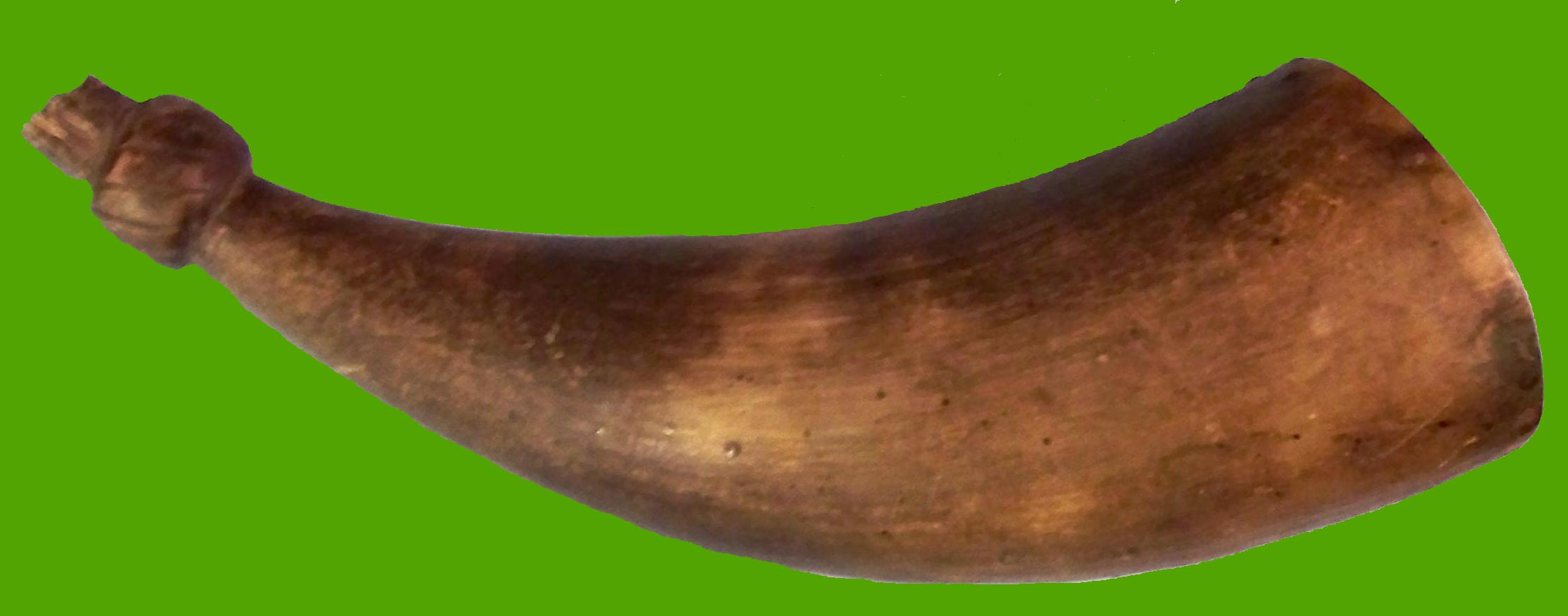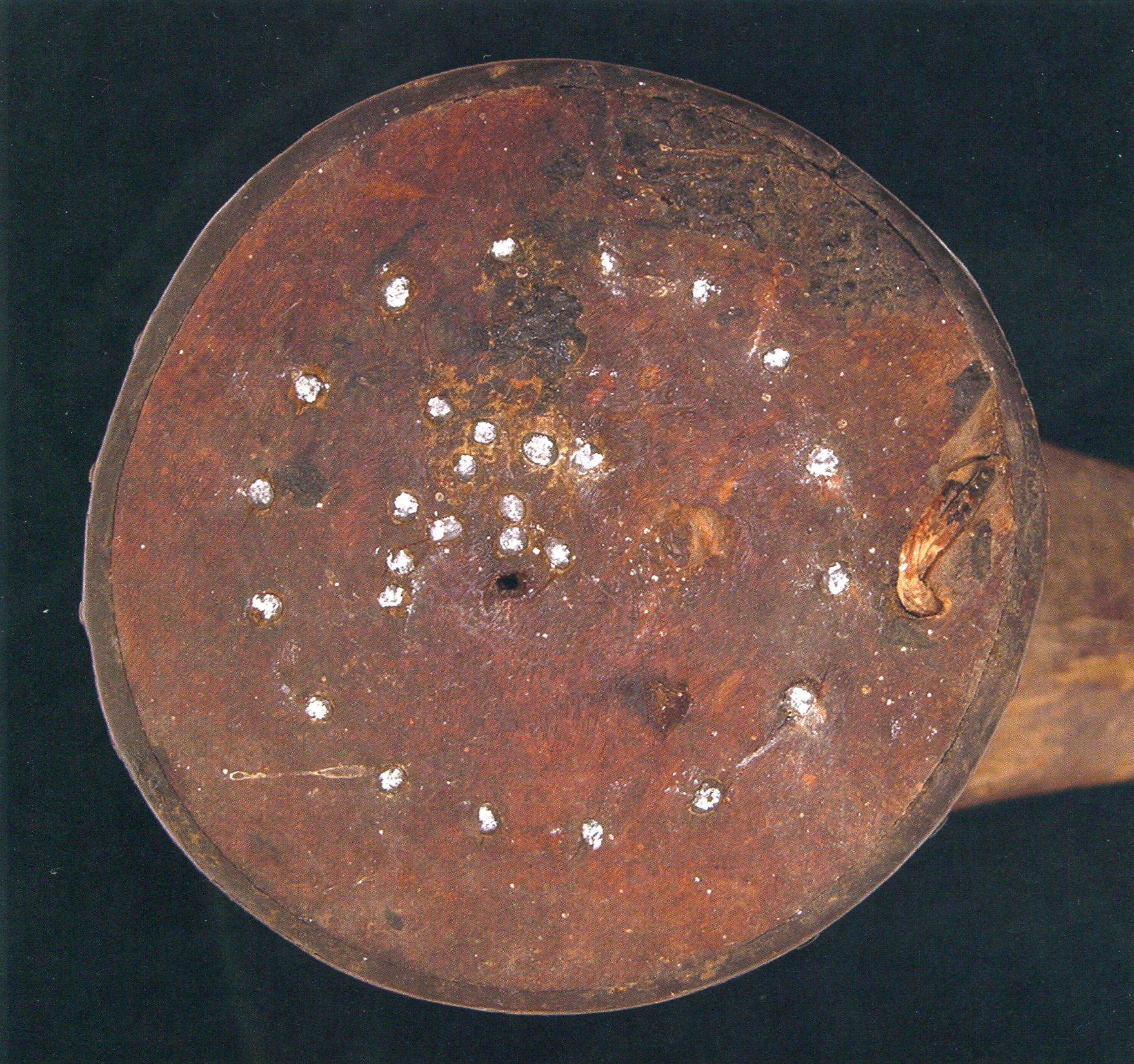
Lloyd Schroder purchased this horn from an antique dealer for a mere $25, later learning that it was not a cow horn, but the horn of an eastern buffalo. That type of buffalo had a brown horn rather than the black horn of the western buffalo. Eastern buffalo were hunted to extinction prior to 1700, making this horn at least 300 years old and almost certainly the creation of an American Indian. While it was purchased in Georgia, there is no indication that it originated here.
Tom Grinslade wrote in his book Powder Horns, Documents of History, “The use of cow horn as a powder container predominated in America from the early eighteenth century into the middle of the nineteenth century because horn was readily available and created a strong and waterproof container for gunpowder and, fortunately, a surface on which to record its history.” Published by Scurlock Publishing in Texarkana, Texas, Grinslade’s book is a warehouse of knowledge that anyone interested in powder horns should read.
Woodland buffalo east of the Appalachians were hunted to extinction by the end of the 17th century, making their horns difficult if not impossible to obtain for powder horns. Powder horns made from Woodland bison during the Colonial wars are unknown. Most of the Woodland bison horns are plain. Rare examples of these horns have a pattern of brass pins hammered into the but plug of the horn. Within a circle of pins there is a design of pins. Based on Indian lore, Some researchers believe that the pattern of pins represent a constellation of stars visible on the night a baby was born, giving the child a lifetime sign.

Powder Horn butt plug with the constellation Canis Major.